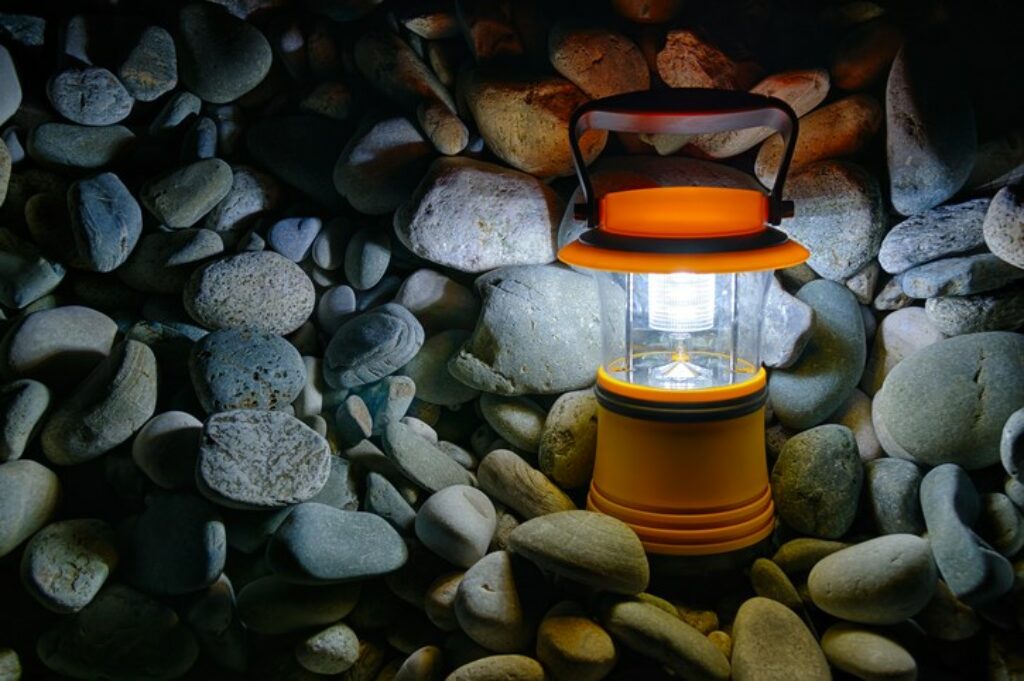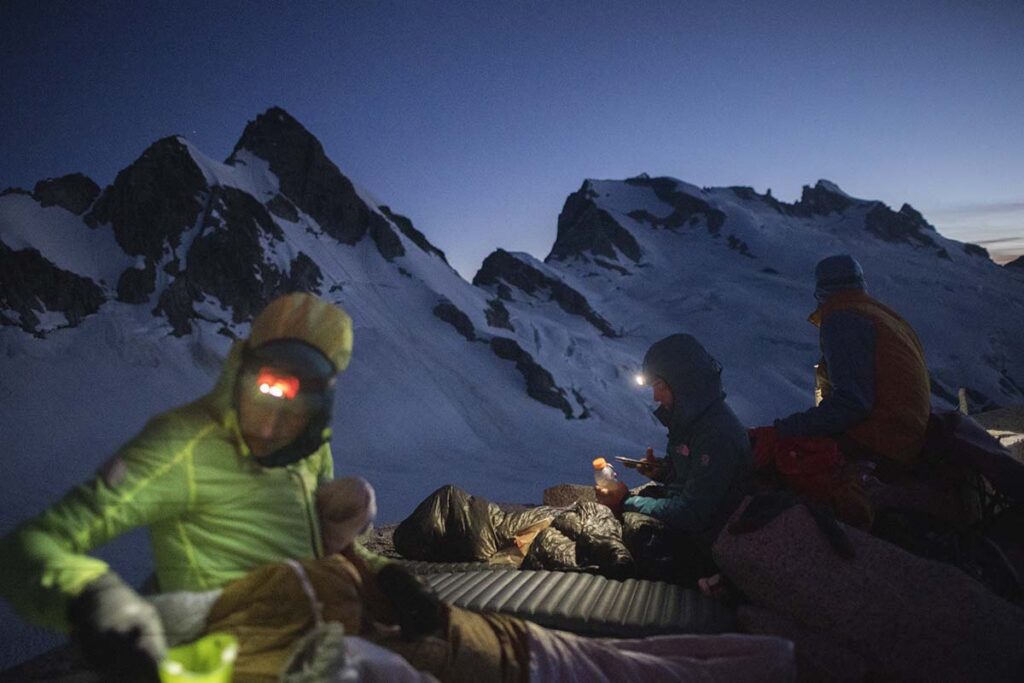Choosing the right outdoor lighting can feel a bit like staring into the dark—uncertain and overwhelming. Whether you’re trekking through the woods, setting up a cozy campsite, or simply enjoying a book by the fire, getting the right brightness level can make all the difference. That’s where understanding lumens comes in.
But what exactly are lumens? And how do you know if you have enough brightness for your needs? This guide will shine a light on everything you need to know about lumens and how to pick the perfect lighting for your outdoor adventures.
What Are Lumens and Why Do They Matter?
Lumens are a measure of how much light a device emits—think of it as the brightness level. Unlike watts, which only tell you how much energy a bulb uses, lumens reveal the actual brightness of the light produced. The higher the lumens, the brighter the light. Simple enough, right?
Here’s a quick comparison to make things clearer:
- A standard candle emits about 12 lumens. Just enough to light up a small area up close.
- A 40-watt incandescent bulb produces roughly 450 lumens. Good for small rooms or creating ambient lighting.
- A 100-watt incandescent bulb delivers around 1600 lumens. Bright enough to light up a decent-sized room.
When it comes to outdoor adventures, understanding lumens is crucial because it directly affects visibility and safety. Whether you’re cooking at camp, navigating dark trails, or reading under the stars, the right brightness can make your experience enjoyable and stress-free.
Recommended Lumen Levels for Different Outdoor Activities
Now, let’s talk specifics. What kind of brightness do you actually need for your outdoor activities? It depends on what you’re doing, but here’s a handy guide:
Hiking & Camping:
- Headlamps & Flashlights: 100 to 300 lumens is generally enough for nighttime hiking or finding your way around camp. If you’re tackling more rugged terrain or need extra clarity, go for 300+ lumens.
- Lanterns: 200 to 600 lumens works well for illuminating campsites or tents. The higher end of this range is great if you’re playing cards or cooking with friends.
Backyard & Campsite Lighting:
- Path Lights: 100 to 200 lumens is ideal for marking pathways or adding a soft glow to your campsite without overwhelming your surroundings.
- Porch or Deck Lighting (Outdoor Recreation): 300 to 500 lumens provides a cozy, welcoming atmosphere perfect for evening storytelling or preparing gear.
Recreational Lighting:
- Reading Outdoors: 300 to 500 lumens usually does the trick. If you’re relaxing in your tent or reading beside a campfire, this range offers a comfortable brightness level that doesn’t strain your eyes.

How Many Lumens is a Good Outdoor Light?
When you’re venturing into the outdoors, what counts as “good” lighting varies based on your needs. Here’s a simple breakdown:
- Ambient Lighting (Soft, General Glow): 100 to 300 lumens – Great for path lights, tent lights, and cozy evening setups.
- Task Lighting (Focused, Practical Use): 400 to 700 lumens – Ideal for reading, cooking, or navigating tricky trails at night.
Remember, it’s all about matching the brightness to your activity. Hiking a dark trail will require more lumens than relaxing by a campfire.
How Many Lumens is Considered Very Bright?
Anything over 1000 lumens is considered very bright, but unless you’re trying to light up an entire campsite or engage in some night hiking in challenging terrain, you probably won’t need that much. High-powered flashlights and lanterns within the 1000-lumen range are often preferred by seasoned adventurers who need powerful illumination in unpredictable environments.
Is 800 Lumens Bright Enough for a Porch Light? (Or Outdoor Gathering)
Yes, 800 lumens is generally bright enough for outdoor settings where you want good visibility without feeling like you’re in a spotlight. If you’re using it for a porch light or campsite gathering area, it offers a welcoming, well-lit atmosphere perfect for hanging out, cooking, or organizing your gear. For wider outdoor areas, you may want to use multiple lights for better coverage.
Is 400 Lumens Bright Enough for Reading?
For most people, 400 lumens is just about right for reading, especially if you’re using a focused light source like a headlamp or compact reading lamp. But if you’re trying to read in a dimly lit tent or an area with a lot of ambient light, you may prefer something closer to 500 lumens for clearer visibility.

Tips for Choosing the Right Lumen Level for Your Needs
- Know Your Purpose: Think about what you need the light for—relaxing at camp, hiking rugged trails, or reading comfortably.
- Consider Your Location: Is it a dark, dense forest or a wide-open campsite? Your surroundings matter.
- Adjustable Brightness: Look for devices with dimming features so you can adapt to different scenarios.
- Power Source Matters: Choose between battery-powered, rechargeable, or solar options depending on your outdoor plans.
Additional Considerations for Outdoor Lighting
- Durability: Make sure your lighting device is weather-resistant if you plan to leave it outside for long periods.
- Rechargeable vs. Battery-Powered: Evaluate the pros and cons of each. Rechargeable lights are eco-friendly but might need a power source eventually. Batteries last longer but can be bulky.
- Eco-Friendly Options: Solar-powered lights are fantastic for long trips where power outlets are nonexistent.
Practical Examples for Better Lighting Choices
Let’s say you spend the day hiking and finally arrive at your campsite at dusk. For setting up your tent or cooking dinner, a headlamp with 300 to 500 lumens will give you enough brightness to clearly see what you’re doing. Once you’re ready to relax, a lantern with 200 to 400 lumens will provide a soft, warm glow perfect for unwinding.
If you’re reading a book by the campfire, consider a reading light of at least 400 lumens to prevent eye strain.
Minimizing Light Pollution & Respecting Wildlife
It’s important to remember that overly bright lights can disturb nocturnal wildlife. Keeping your lumen levels moderate not only conserves battery power but also helps maintain the natural environment. Opt for lower brightness settings when you’re not in immediate need of full brightness, and use lanterns with directional lighting to minimize disruption.
Leave a Comment:
What’s your go-to lighting setup when you’re out adventuring? Drop a comment below and share your tips and tricks!






